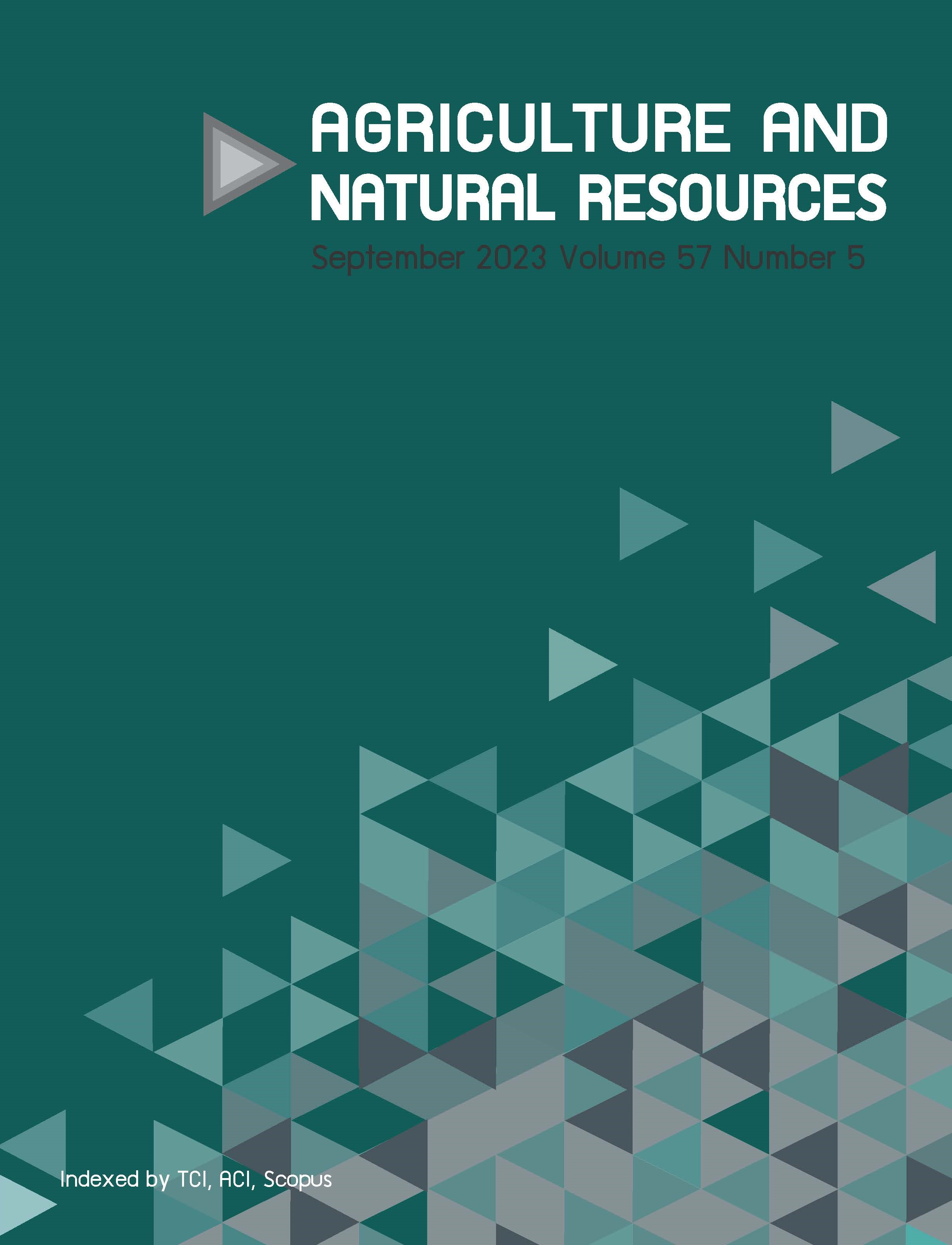Numerical simulation study of flow patterns in shrimp pond due to aerator layout for shrimp harvesting machine application
Keywords:
Aerator placement, Computational fluid dynamics, Pacific white shrimp, Sediment aggregation efficiency, Shrimp harvestingAbstract
Importance of the work: Efficient shrimp harvesting may be enhanced using a centrifugal force technique for aerator placement optimization in Pacific white shrimp ponds.
Objectives: To examine the influence of diverse aerator layouts on shrimp harvesting efficiency in the specified ponds.
Materials & Methods: Three prevalent aerator layouts were examined: Type A (4-spiral and 4-wheeled paddle aerators), Type B (4 cross-shaped middle cages), and Type C (4 15-wheeled paddle aerators). The velocity and sediment aggregation efficiency were analyzed using the SolidWorks Flow Simulation software and a drop particle function. Model accuracy was validated by comparing actual water velocity measurements with the simulation results.
Results: The analysis presented a strong concurrence between the real and simulated data, substantiating the precision of the simulation model in replicating the water flow characteristics in the investigated shrimp pond layouts. The highest water velocity of 21.396 cm/s was produced by the Type C aerator layout positioned at 0.5 m below the water surface, whereas the Type A layout, situated at 1.5 m depth, produced the lowest water velocity of 0.978 cm/s. The particle study revealed the superior particle collection efficiency of Type C, reaching 91% and surpassing the other layouts. These findings emphasized the significant of the aerator’s location within the pond, with the Type C layout being the most effective in terms of water flow and particle collection.
Main finding: This research highlighted the importance of optimizing aerator layouts in Pacific white shrimp ponds for improved water circulation dynamics and enhanced shrimp harvesting efficiency. The Type C layout achieved the highest practical collection
efficiency of 91%, contributing to sustainable aquaculture practices.
Downloads
Published
How to Cite
Issue
Section
License
Copyright (c) 2023 Kasetsart Universityonline 2452-316X print 2468-1458/Copyright © 2022. This is an open access article under the CC BY-NC-ND license (http://creativecommons.org/licenses/by-nc-nd/4.0/),
production and hosting by Kasetsart University of Research and Development Institute on behalf of Kasetsart University.







